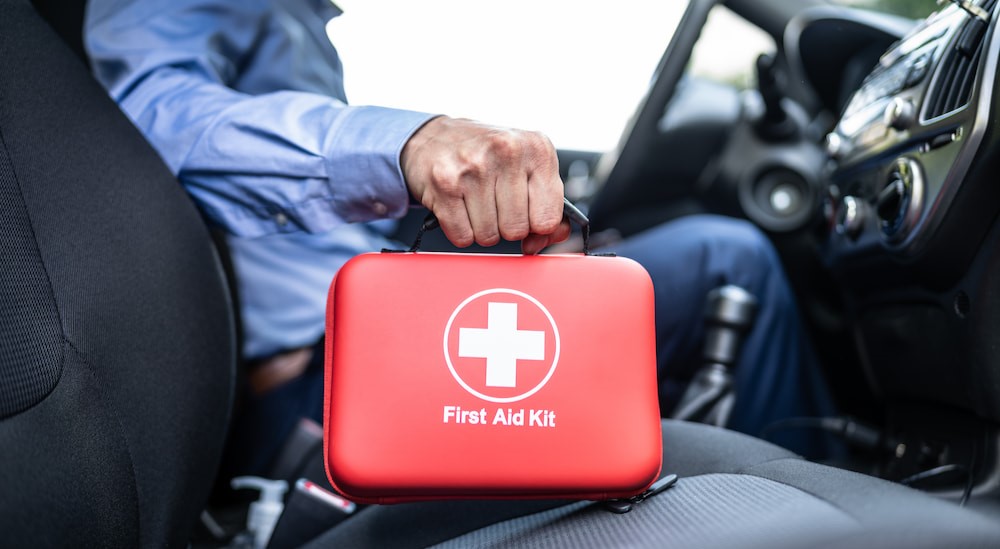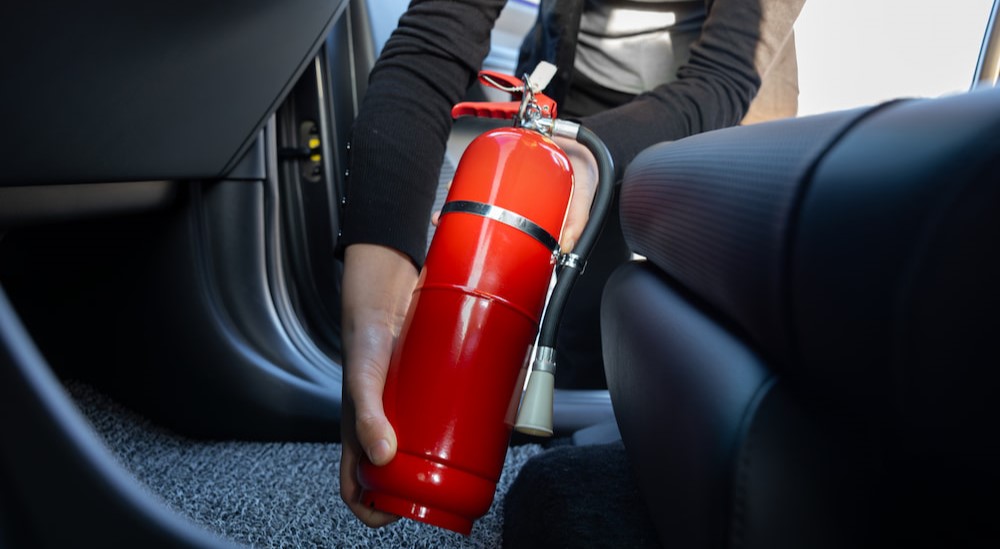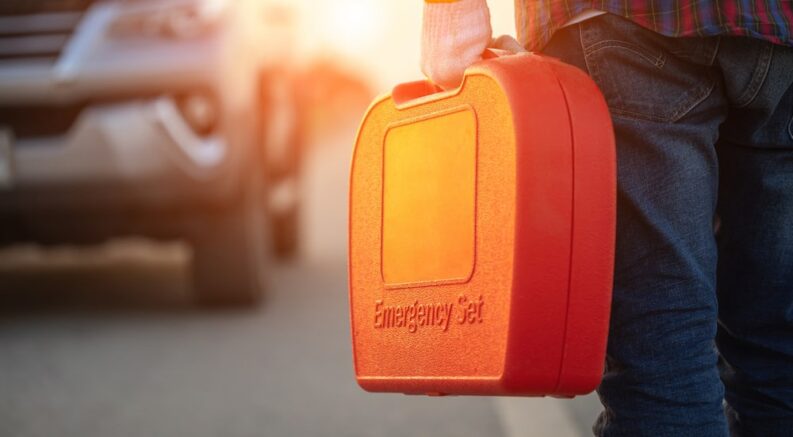Do you ever think of worst-case scenarios when you’re behind the wheel? While scenarios like your car launching off the river bridge often (and thankfully) only play out on the silver screen, there’s a lot to be said for being prepared and expecting the unexpected.
I spent years working with civilians and responders in tactical situations, from basic emergency medicine to swift-water rescue. Regardless, every lesson came back to being prepared for the unexpected, first by having the essential skills in your life’s toolbox, and second by having a few necessities on hand. As a driver, that means having a well-equipped emergency kit for roadside and first aid needs.
Ideally, your first aid and roadside emergency kit will gather dust in the cargo area or under the seat before you use it. However, in the rare event you need something, you know it’s there. How can you guarantee you have everything you might need? I’m here to help by offering a closer look at the differences between roadside and first aid kits and how you can use an all-in-one kit as a foundation to build the perfect, comprehensive kit for your vehicle.
Types of Emergency Kits: Roadside and First Aid
As a driver, there are two types of emergency kits to keep in your vehicle. A first aid kit is tailored to emergency situations that require basic medical attention. For example, a first aid kit often includes a pair of medical scissors, bandages, gauze, ointment, over-the-counter painkillers, and medical tape. More advanced kits designed for drivers who spend more time in extreme conditions, whether overlanding or hunting, may include items like a tourniquet or wound packing material.
Where a first aid kit is designed for you and your passengers, your roadside emergency kit should have everything your vehicle needs. These kits can include everything from jumper cables and tow straps to a flashlight, jump starter, and fire extinguisher. Like the first aid kit, these kits can be tailored to your driving needs, particularly the environment and conditions. For example, overlanders will have more tow straps and tire-related tools in their kits, while commuters who spend a lot of time in the city will likely keep a set of jumper cables.
All-in-One Kits vs. Build-Your-Own: Why Not Both?
Emergency kits are readily available as all-in-one kits, making it easy to find a well-equipped roadside and first aid kit. Sometimes, these kits include first aid and roadside tools, making life even easier. For example, two of the most all-inclusive kits on the market are Thrive’s Roadside Emergency Car Kit and the Lifeline AAA Excursion Road Kit. The kits come in durable bags and feature 70 to 100 items, including roadside tools like a tire pressure gauge, flashlight, jumper cables, and first aid items.
This type of all-in-one kit is an excellent starting point that offers many benefits. It’s convenient and cost-effective, costing around $50 for everything you need. Moreover, it can be a starting point to build a custom kit. Once you have the basic kit, you may want to upgrade a few components, like a better, brighter flashlight or a more comprehensive first aid kit. In this case, the all-in-one kit serves as a foundation to add to and enhance with other items. Personally, I think this is the best way to have what you need on hand and tailor the kit without spending a fortune.

Emergency Roadside Kit: Items to Consider
Consider high-quality and advanced items as you customize or upgrade your roadside emergency kit. Many basic kits come with a screwdriver and a knife, but there are better options that will last longer and do more. You may also find that it makes sense to travel with a portable air compressor and a tire repair kit, particularly if you like to venture off the pavement into the unknown.
Multitool: Leatherman Wave Plus
Replacing a cheap knife and screwdriver with a multitool is outstanding, especially if it’s a Leatherman. The Leatherman Wave Plus is a top-seller because it has every tool you could possibly need in an emergency. From a screwdriver to a small pair of scissors and a seatbelt cutter, the Wave Plus is an outstanding value with 18 built-in tools you can use in your roadside kit or for everyday carry.
Jump Starter: NOCO Boost Plus
The idea of carrying a battery jump-starter was outrageous decades ago because the equipment was expensive and incredibly bulky. Fortunately, things have changed, as NOCO has proved with its Boost Plus jump starter. Priced around $100, this basic jump starter is lightweight and compact. Depending on your budget, you can spend more on options like the NOCO Boost X-Series, but the upgrade isn’t absolutely necessary.
Fire Control: First Alert Automar10 Fire Extinguisher
A fire extinguisher is one of the most overlooked tools in a roadside emergency kit. While we ensure our homes have fire extinguishers and alarms, we don’t give much thought to our vehicles. Fortunately, the solution is easy and comes from First Alert, an industry leader in auto-specific extinguishers. The First Alert Automar10 Fire Extinguisher is compact and affordable at under $40. As a BC extinguisher, it can fight electrical fires and flammable liquid, two of the most common culprits of automotive fires.
Tire Tools: Avid Power Tire Inflator Air Compressor
Last but certainly not least on our list is a portable air compressor. This item isn’t a must-have for every driver. If you spend most of your time in the city where gas stations and mechanics are readily available, there’s no need to have an air compressor to fix low tire pressure. However, if you spend a lot of time traveling in remote areas or like to venture off the pavement, a portable air compressor like the Avid Power Tire Inflator can instill confidence and peace of mind for less than $100.

Emergency First Aid Kit: Items to Consider
As you shop for your vehicle’s roadside first aid kit, know that most all-in-one kits are equipped with the basics. Treat this type of kit as a starting point since most include gauze, bandages, trauma sheers, and medical tape. From there, consider your environment, your health, and where you frequently travel to tailor the kit to your specific needs.
Climate and Environment-Related Items
Adding an emergency survival blanket is an excellent idea for every driver because trauma can send us into shock. If you live in an area where temperatures plummet, consider adding more cold-weather-related items, like a wool blanket, hat, gloves, and socks. For non-winter-related items, consider adding sunscreen, bug repellant, and a hat to keep the sun out of your eyes and off your face.
Medications
Your first aid kit should be designed for you and your family’s needs. This means adding the medications that you might need in an emergency. For example, consider adding an antihistamine for allergic reactions, over-the-counter pain medications, antacid and stomach medicine, and glucose tablets. You can also add a supply of your daily medications.
Trauma Necessities
Bandages are often the first thing we think of when it comes to first aid kits. However, there’s far more you might want to consider. For example, a basic kit usually includes bandages, gauze, and shears. Still, you might add more advanced items like QuickClot to control heavy bleeding, triple antibiotic cream for minor scrapes, a CPR shield, gloves, wound closures, a vented chest seal, and a tourniquet.
Miscellaneous Items
Miscellaneous items typically complete a first aid kit by considering and preparing for the unexpected. These items range widely and often include zip ties and tweezers, sanitation wipes, extra batteries, a cell phone charger, matches, a whistle, and a permanent marker. Sometimes, you may add a contact lens case with solution and an old pair of glasses.
Finding the Perfect Kit
Does the perfect emergency kit exist? Absolutely. Is it something you can buy online and throw blindly in the back of your vehicle? Not hardly.
The best emergency roadside and first aid kits are tailored to your specific needs. Start with an all-in-one kit that offers most of the necessary tools, and then customize the kit from there by adding things specific to your environment and needs. In doing so, you reap the benefits of a cost-effective kit that you can design to instill peace of mind, knowing everything you need is on hand as you navigate the road.

